Menus
- Husqvarna Crosser 2016 in the driving report
- Prices between 8895 and 9495 euros
- 2016 models – what’s new?
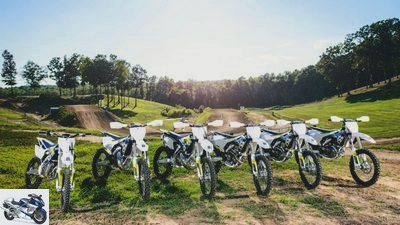
Husqvarna
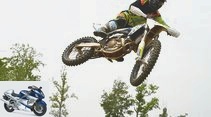
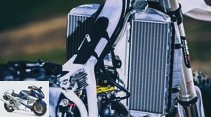
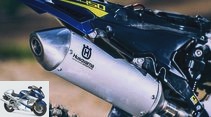
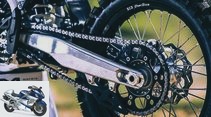
12th photos
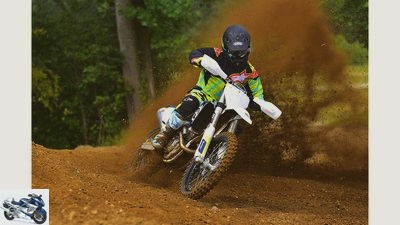
Husqvarna
1/12
Husqvarna Crosser – 2016 model year.
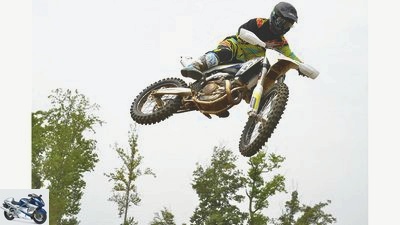
Husqvarna
2/12
Husqvarna Crosser – 2016 model year.
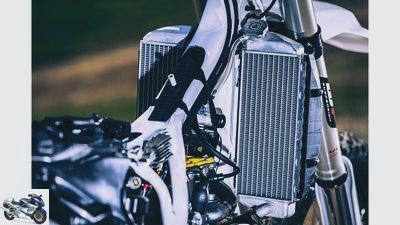
Husqvarna
3/12
Husqvarna Crosser – 2016 model year.
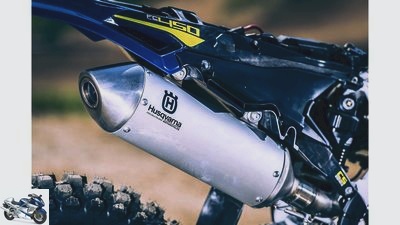
Husqvarna
4/12
Husqvarna Crosser – 2016 model year.
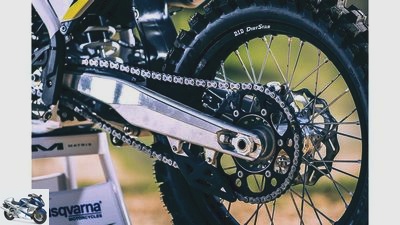
Husqvarna
5/12
Husqvarna Crosser – 2016 model year.

Husqvarna
6/12
Husqvarna Crosser – 2016 model year.
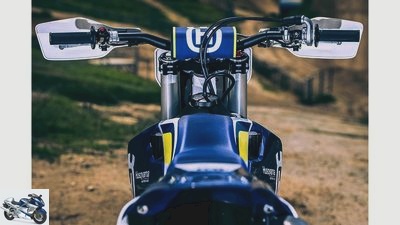
Husqvarna
7/12
The 4CS fork has been retained and still works with steel springs.

Husqvarna
8/12
The Huskies are not just KTM bikes painted blue and yellow, the design is completely different.
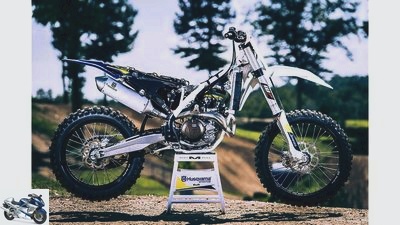
Husqvarna
9/12
Everything new, everything extremely compact – and very light: the Husqvarna FC 450 shown weighs only 102.4 kg.
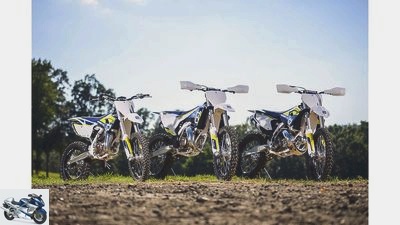
Husqvarna
10/12
All three FC models weigh less than the Japanese competition despite the electric starter and battery on board.
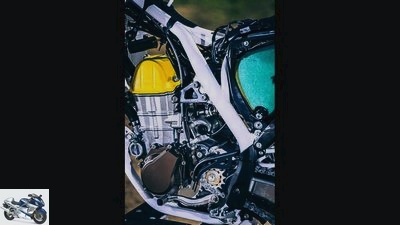
Husqvarna
11/12
All three four-stroke engines became smaller and lighter, and also got more torque.
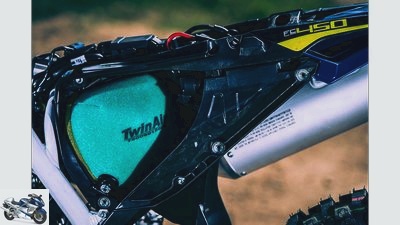
Husqvarna
12/12
The rear frame consists of a plastic reinforced with carbon fibers.
Husqvarna FC 250, Husqvarna FC 350 and Husqvarna FC 450
Husqvarna Crosser 2016 in the driving report
The recipe: in principle KTM technology, but repackaged and with upgraded equipment. This also applies to the 2016 crossers. We have already driven the new Husqvarna models.
Husqvarna has developed well after KTM took over the ailing brand from BMW in 2013. The recipe: in principle KTM technology, but repackaged and with upgraded equipment. This also applies to the 2016 crossers. KTM had already presented three completely new, considerably lighter four-stroke machines. The Huskies are also based on these, they differ essentially in their different outfit, a carbon rear frame and the well-known 4CS fork from WP, which still works conventionally with steel springs instead of the current air suspension.
Buy complete article

Husqvarna FC 250, Husqvarna FC 350 and Husqvarna FC 450
Husqvarna Crosser 2016 in the driving report
Unrivaled in the upper speed range
The wider plastic rear makes the huskies appear a bit more massive, but doesn’t bother them, on the contrary, it gives the legs more support and guidance in every situation. The rear is a little lower than on the new KTM crossers thanks to a shorter shock absorber. A trend that comes from the USA and that shifts the balance backwards. This brings more neutrality in corners without noticeably affecting the turning. The 4CS fork works with a lot of progression in deep waves or hard landings, but does not respond particularly well on small, hard edges and then causes unrest in the landing gear. The 4CS fork has a good reputation in the US, so Husqvarna left it in on the 2016 models. It is questionable whether it is on a par with the new KTM air fork.
All three Husqvarna four-stroke engines can definitely keep up. According to the information, the 250 was more powerful in the middle, but the quarter-liter engine is still more geared towards top performance and requires a correspondingly committed driving style with a lot of commitment. What goes on in the upper speed range is certainly unrivaled in this class. On the other hand, the 350, which turns almost as high, namely an unbelievable 13,400 rpm, offers a wide speed range, shifting becomes a sheer luxury on the smooth US slopes. It also got more torque from below, but the easy controllability has remained.
Prices between 8895 and 9495 euros
At the top, the 350 delivers an impressive 58 hp, surpassing many a 450 engine. But certainly not the in-house 450 unit, which is in a league of its own in terms of peak performance and torque. Like the two sisters, the engine of the 450 Husqvarna has been heavily modified; almost every component is smaller, more compact and lighter. The bottom line is that this results in a higher level of efficiency. Above all, the enormous running smoothness and the good manageability inspire despite a top performance that even professionals stretch out their arms.
Unfortunately, the ratio of the four-speed gearbox is a bit long overall, which results in a large jump in speed between second and third gear. Depending on the route, a 50 chainring instead of a 48 might be better. So three great, greatly improved high-tech devices, which, however, have their price: Husqvarna buyers have to shell out between 8895 and 9495 euros.
2016 models – what’s new?
Husqvarna
What has changed in the 2016 models?
Engines
- New, more compact engine generation
- Shorter connecting rods
- New, lighter gearboxes
- Aisle-specific mapping, two mappings and launch control selectable
Undercarriages
- lighter frames with optimized rigidity, rear frame made of plastic / carbon mix
- Suspension strut with extended stroke and new lever mechanism
- Handlebars now mounted in rubber
- shorter mufflers
Related articles
-
Driving report KTM Crosser 2016
KTM 24 photos KTM 1/24 All three of the KTM four-stroke models presented have been on a diet. KTM 2/24 … one of them on the engine alone. KTM 3/24…
-
Sherco Sportenduros 2016 driving report
Sherco 18th photos Sherco 1/18 Compared to the previous year’s model, not much has changed for 2016 – but that’s a good thing. Sherco 2/18 The Sherco 450…
-
Driving report Yamaha factory crosser YZM 400 F
Driving report Yamaha factory crosser YZM 400 F It’s a pony While the competition in the Cyclo-cross World Championship galloped powerful battle horses,…
-
Husqvarna sport enduros of the model year 2017 in the driving report
Husqvarna 30 pictures Husqvarna 1/30 Husqvarna sport enduros, four-stroke models 2017. Husqvarna 2/30 The Husqvarna model range runs without exception at KTM in …
-
Husqvarna sport enduros in the driving report
Husqvarna 19th photos Husqvarna 1/19 After the spectacular takeover of Husqvarna, KTM is swapping its previous second brand Husaberg for the next new…
-
Husqvarna 701 Supermoto in the driving report
Husqvarna 11 photos Husqvarna 1/11 Husqvarna 701 Supermoto. Husqvarna 2/11 Despite the Husky logo: 67 hp, 10,000 inspection intervals – 690 power single…
-
Driving report: Husqvarna TE 250
Husqvarna Driving report Husqvarna TE 250 (2009) Enduro version based on Crosser With a completely redesigned motocross model, Husqvarna has been flying…
-
Driving report: Husqvarna TE 310, model 2009
Driving report: Husqvarna TE 310, model 2009 Little surprise With a 310 cc variant, Husqvarna offers an alternative engine in the 450cc sport enduro…
-
Driving report Bimota SB 6 R Draft horse Often promised – never kept. Only the SB 6 R has what the SB 6 was previously lacking: power and performance. The thing …
-
Husqvarna four-stroke crosser 2019
New items 2019 Top topic Husqvarna Husqvarna four-stroke crosser (2019) Update for FC 250, FC 350 and FC 450 Husqvarna has revised its four-stroke…